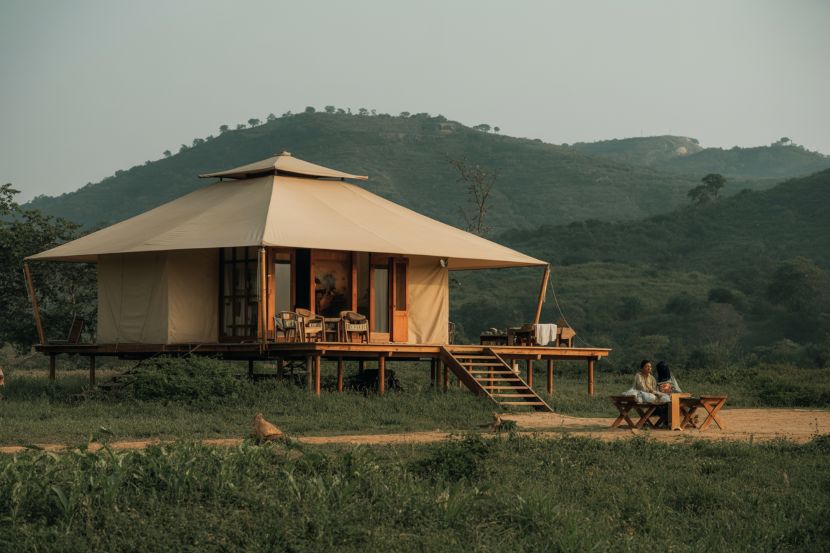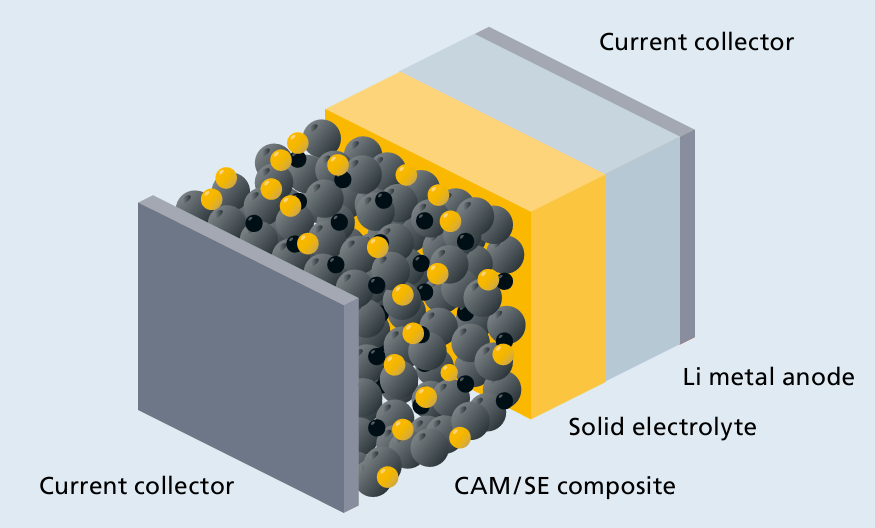TOFT’s Role in Rewilding Tourism: A New Era for Sustainable Travel in South Asia – Travel And Tour World

Report on TOFT’s Contribution to Sustainable Development through Rewilding Tourism in South Asia
Introduction: Aligning Tourism with the Sustainable Development Goals
The organisation TOFT (Tour Operators for Tigers) has established a model for rewilding tourism in India and Nepal that directly contributes to the United Nations Sustainable Development Goals (SDGs). For nearly two decades, its initiatives have demonstrated that responsible tourism can be a powerful driver for ecosystem restoration, wildlife conservation, and community empowerment. This report analyses TOFT’s approach, highlighting its alignment with key SDGs, including SDG 1 (No Poverty), SDG 8 (Decent Work and Economic Growth), SDG 10 (Reduced Inequalities), SDG 12 (Responsible Consumption and Production), SDG 15 (Life on Land), and SDG 17 (Partnerships for the Goals).
Core Strategies and SDG Impact
Community-Centred Tourism for Economic and Social Advancement
A central pillar of TOFT’s strategy is the integration of local communities into the tourism value chain, directly addressing several socio-economic SDGs.
- SDG 1 (No Poverty) & SDG 8 (Decent Work and Economic Growth): By establishing community-run eco-lodges and safari experiences, TOFT facilitates the creation of dignified livelihoods in rural areas. This model ensures that economic benefits are retained locally, reducing poverty and fostering sustainable economic growth.
- SDG 5 (Gender Equality): The development of women-led homestays actively promotes female entrepreneurship and economic independence, contributing to gender equality within these communities.
- SDG 10 (Reduced Inequalities): The initiatives ensure that communities who have historically coexisted with wildlife are primary beneficiaries of tourism, promoting equitable benefit-sharing and reducing inequalities.
Ecosystem Regeneration and Biodiversity Conservation
TOFT’s work is fundamentally linked to the protection and restoration of natural habitats, a core objective of SDG 15.
- SDG 15 (Life on Land): The concept of “rewilding tourism” actively supports the regeneration of ecosystems and the conservation of biodiversity. By creating economic incentives for conservation, TOFT’s model reduces pressure on forest resources and protects wildlife, proving that tourism can be a net positive for the environment.
Fostering Industry-Wide Transformation through Partnerships and Recognition
Strategic Partnerships for Global Standards
TOFT leverages strategic collaborations to scale its impact and promote industry-wide adoption of sustainable practices, exemplifying SDG 17.
- Collaboration with Travelife: The renewed partnership with Travelife for Tour Operators, announced in October 2025, is a key initiative to enforce global sustainability standards. This aligns with SDG 17 (Partnerships for the Goals) by uniting organisations to achieve a common sustainability agenda.
- Promoting Responsible Practices: By promoting Travelife-certified operators, TOFT advances SDG 12 (Responsible Consumption and Production), encouraging sustainable patterns within the tourism industry.
- Capacity Building: The collaboration includes training for guides, naturalists, and lodge staff, enhancing skills and job quality in line with SDG 8.
Awards and Global Recognition
TOFT’s leadership in sustainable travel has been validated through significant international accolades, which serve to promote its replicable model.
- 2025 Honours: TOFT was named a Sustainable Travel Innovator and received the Good Travel Frontrunner Award 2025, underscoring its global influence.
- TOFT Wildlife and Nature Tourism Awards: This flagship event, scheduled for December 2025, incentivises the tourism sector by recognising measurable impacts in conservation (SDG 15) and community empowerment (SDG 1, 8, 10). It celebrates integrity and innovation, fostering a new generation of responsible travel professionals.
Conclusion: A Roadmap for Regenerative Tourism
TOFT’s work in India and Nepal provides a compelling and proven framework for regenerative travel. By systematically integrating community empowerment, ecosystem restoration, and strategic partnerships, the organisation has created a tourism model that actively contributes to multiple Sustainable Development Goals. As the global community seeks effective solutions to climate change and biodiversity loss, TOFT’s rewilding tourism approach offers a scalable roadmap for a future where tourism, communities, and nature can thrive together.
Analysis of Sustainable Development Goals (SDGs) in the Article
1. Which SDGs are addressed or connected to the issues highlighted in the article?
- SDG 5: Gender Equality: The article mentions the establishment of “women-led homestays,” which directly contributes to empowering women by providing them with economic opportunities and leadership roles within their communities.
- SDG 8: Decent Work and Economic Growth: The article focuses on creating “dignified livelihoods” in rural areas through community-centred tourism. Initiatives like eco-lodges and community-managed safaris ensure that economic benefits from tourism are retained locally, promoting inclusive and sustainable economic growth.
- SDG 12: Responsible Consumption and Production: The entire article is centred on “sustainable travel,” “responsible tourism,” and “ethical travel practices.” TOFT’s work in promoting Travelife-certified operators and recognizing sustainable practices through awards directly supports the development of sustainable tourism.
- SDG 15: Life on Land: This is a primary focus of the article. The concept of “rewilding tourism” aims to restore ecosystems, protect wildlife, reduce pressure on forests, and protect biodiversity. The article explicitly mentions “wildlife conservation,” “ecosystem regeneration,” and “restoring landscapes.”
- SDG 17: Partnerships for the Goals: The article highlights the importance of collaborations, specifically mentioning the “partnership between TOFT and Travelife for Tour Operators.” This collaboration aims to strengthen sustainable tourism in India and Nepal, demonstrating a multi-stakeholder approach to achieving sustainability goals.
2. What specific targets under those SDGs can be identified based on the article’s content?
- Target 5.5: Ensure women’s full and effective participation and equal opportunities for leadership in all levels of decision-making in political, economic and public life. The creation of “women-led homestays” is a direct example of promoting women’s economic participation and leadership.
- Target 8.9: By 2030, devise and implement policies to promote sustainable tourism that creates jobs and promotes local culture and products. TOFT’s model of community-centred tourism, which establishes eco-lodges and ensures economic benefits stay within communities, directly aligns with this target.
- Target 12.b: Develop and implement tools to monitor sustainable development impacts for sustainable tourism that creates jobs and promotes local culture and products. The TOFT Wildlife and Nature Tourism Awards, which celebrate “measurable impact” and “measurable progress in conservation,” serve as a tool to monitor and encourage sustainable practices in the tourism industry.
- Target 15.1: By 2020, ensure the conservation, restoration and sustainable use of terrestrial and inland freshwater ecosystems and their services, in particular forests, wetlands, mountains and drylands, in line with obligations under international agreements. The article’s emphasis on “rewilding tourism,” “regenerating ecosystems,” and reducing “pressure on forest ecosystems” directly supports this target.
- Target 15.5: Take urgent and significant action to reduce the degradation of natural habitats, halt the loss of biodiversity and, by 2020, protect and prevent the extinction of threatened species. TOFT’s work in “wildlife conservation” and “protecting biodiversity” through responsible tourism is a clear effort towards achieving this target.
- Target 17.16: Enhance the global partnership for sustainable development, complemented by multi-stakeholder partnerships that mobilize and share knowledge, expertise, technology and financial resources, to support the achievement of the sustainable development goals in all countries, in particular developing countries. The collaboration between TOFT and Travelife for Tour Operators is a specific example of such a partnership to promote sustainable tourism.
3. Are there any indicators mentioned or implied in the article that can be used to measure progress towards the identified targets?
- Indicator for Target 5.5: The number of “women-led homestays” established. This is a direct, quantifiable measure of women’s economic empowerment and participation in the tourism sector.
- Indicator for Target 8.9: The number of “dignified livelihoods” created in rural areas through tourism. This can be measured by tracking employment in community-run eco-lodges and other tourism-related activities.
- Indicator for Target 12.b: The existence and use of sustainability certification and awards programs. The article mentions “Travelife-certified operators” and the “TOFT Wildlife and Nature Tourism Awards,” which serve as indicators of a system to monitor and promote sustainable tourism.
- Indicator for Target 15.1 & 15.5: The area of land or ecosystems being actively restored or protected through “rewilding tourism” initiatives. The article refers to “restoring landscapes” and “regenerating ecosystems,” which implies a measurable area of impact.
- Indicator for Target 17.16: The number of strategic partnerships formed to promote sustainable practices. The article explicitly names the renewed collaboration between TOFT and Travelife for Tour Operators as a key initiative.
4. Create a table with three columns titled ‘SDGs, Targets and Indicators” to present the findings from analyzing the article. In this table, list the Sustainable Development Goals (SDGs), their corresponding targets, and the specific indicators identified in the article.
| SDGs | Targets | Indicators |
|---|---|---|
| SDG 5: Gender Equality | 5.5: Ensure women’s full and effective participation and equal opportunities for leadership. | Number of “women-led homestays” established. |
| SDG 8: Decent Work and Economic Growth | 8.9: Promote sustainable tourism that creates jobs and promotes local culture. | Number of “dignified livelihoods” created in rural communities through eco-lodges and community-managed experiences. |
| SDG 12: Responsible Consumption and Production | 12.b: Develop and implement tools to monitor sustainable development impacts for sustainable tourism. | Existence of sustainability certification (Travelife-certified operators) and awards (TOFT Awards) to recognize “measurable impact.” |
| SDG 15: Life on Land | 15.1: Ensure the conservation and restoration of terrestrial ecosystems. 15.5: Halt the loss of biodiversity. |
Area of land under “rewilding” and “ecosystem regeneration” projects; progress in “wildlife conservation” and “protecting biodiversity.” |
| SDG 17: Partnerships for the Goals | 17.16: Enhance the global partnership for sustainable development. | Number and strength of strategic collaborations, such as the partnership between TOFT and Travelife for Tour Operators. |
Source: travelandtourworld.com
What is Your Reaction?
 Like
0
Like
0
 Dislike
0
Dislike
0
 Love
0
Love
0
 Funny
0
Funny
0
 Angry
0
Angry
0
 Sad
0
Sad
0
 Wow
0
Wow
0


















































.jpg.webp?itok=0ZsAnae9#)





/environment-climate-change-and-health-(ech)/water-sanitation-hygiene-and-health-(wsh)/landfill-tuvalu-36092.tmb-1200v.jpg?sfvrsn=5c21fe40_1#)


















